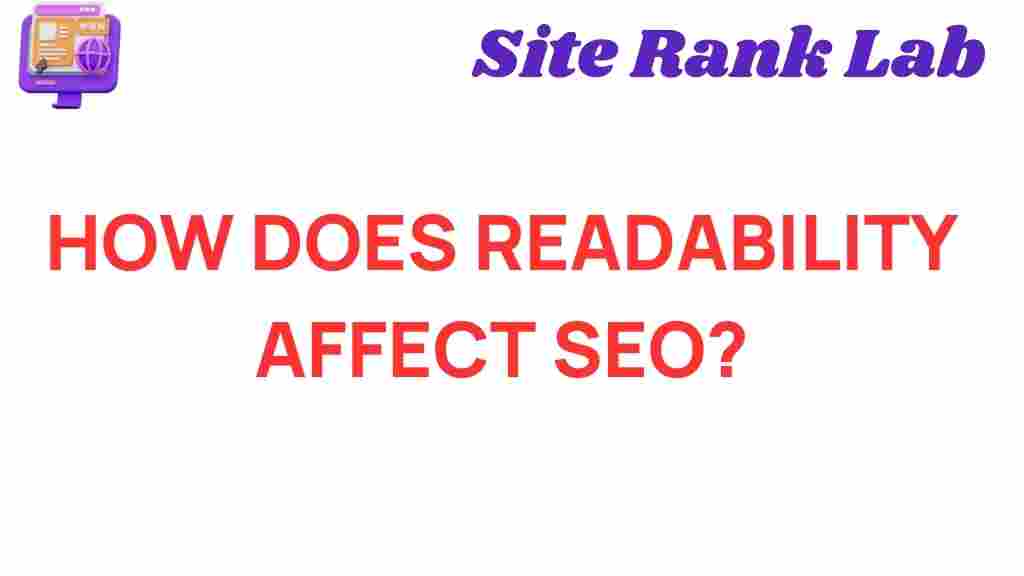The Hidden Link: How Readability Influences SEO Success
In the world of digital marketing, content is king. However, not just any content will do; it needs to be optimized for both search engines and users. One of the most crucial factors that can make or break your content’s effectiveness is readability. This article delves into how readability influences SEO success, enhancing user experience, boosting website traffic, and improving search rankings. By understanding the connection between readability and content optimization, you can craft a robust content strategy that drives engagement.
Understanding Readability
Readability refers to how easy and enjoyable it is for a reader to understand a piece of text. Factors that contribute to readability include:
- Sentence length
- Word choice
- Text structure
- Formatting (like bullet points and headings)
High readability means your content is easily digestible, allowing readers to grasp your message quickly. Low readability, on the other hand, can frustrate users, leading to high bounce rates—an issue detrimental to your SEO efforts.
Why Readability Matters for SEO
Search engines like Google prioritize content that provides value to users. Therefore, content that is difficult to read can adversely affect your search rankings. Here’s how:
- User Engagement: Readable content keeps users engaged longer, which signals to search engines that your content is valuable.
- Lower Bounce Rates: If users can quickly understand your content, they are less likely to leave the page immediately.
- Higher Conversion Rates: Clear, concise content improves user trust and leads to higher conversion rates.
Step-by-Step Process to Enhance Readability
Improving readability is not just about using simpler words; it’s also about creating a thoughtful layout and structure. Here’s a step-by-step guide:
1. Know Your Audience
Understanding who your audience is will guide your tone, vocabulary, and complexity. Tailor your content to the reading level and interests of your target demographic.
2. Use Short Sentences and Paragraphs
Long sentences can confuse readers. Aim for an average sentence length of 15-20 words. Additionally, keep paragraphs short (2-4 sentences) to enhance readability.
3. Choose Words Wisely
Opt for simple, everyday language. Avoid jargon unless absolutely necessary. When you do use technical terms, provide clear definitions.
4. Format for Readability
Utilize headings, bullet points, and lists to break up text. This structure allows readers to scan content easily. Use bold or italic text to emphasize key points.
5. Use Visuals to Support Text
Images, charts, and infographics can enhance understanding and retention. Make sure visuals are relevant and help illustrate your points.
6. Implement Readability Tools
Various online tools can analyze your content’s readability, such as the Flesch-Kincaid readability tests. Use these to assess and improve your writing.
7. Edit and Revise
Never underestimate the power of editing. Revisit your content after a short break and read it out loud to identify awkward phrasing or complex ideas that can be simplified.
Troubleshooting Common Readability Issues
Even with the best intentions, issues can arise in achieving optimal readability. Here are some common problems and solutions:
Problem: Overly Complex Vocabulary
Solution: Replace complex words with simpler synonyms. For example, use “use” instead of “utilize.”
Problem: Long, Run-On Sentences
Solution: Revisit your sentences and break them into shorter, clearer segments. Aim for clarity over complexity.
Problem: Lack of Structure
Solution: Revise your content layout. Implement headings, lists, and images to create a visual hierarchy that guides the reader.
Problem: Ignoring User Feedback
Solution: Encourage and analyze feedback on your content. Use this data to make improvements and understand your audience better.
Linking Readability to User Experience
Readability directly impacts user experience, which is a critical component of digital marketing strategies. When users find your content easy to read and engaging, they are more likely to:
- Share your content with others, thus increasing your reach.
- Return to your website for more valuable information.
- Engage with calls-to-action effectively, leading to conversions.
Incorporating readability into your content strategy not only supports your SEO efforts but also builds a loyal audience.
Conclusion
In today’s competitive digital landscape, understanding the hidden link between readability and SEO success is essential. By optimizing your content for readability, you enhance user experience, drive website traffic, and improve your search rankings. Implement the strategies outlined above to create a compelling content strategy that resonates with your audience and performs well in search engines.
For more insights on digital marketing, check out this comprehensive guide on content optimization.
Remember, the better your content is at communicating its message, the more successful you’ll be in attracting and retaining users. Always prioritize readability in your content creation efforts!
This article is in the category SEO and created by SiteRankLab Team
